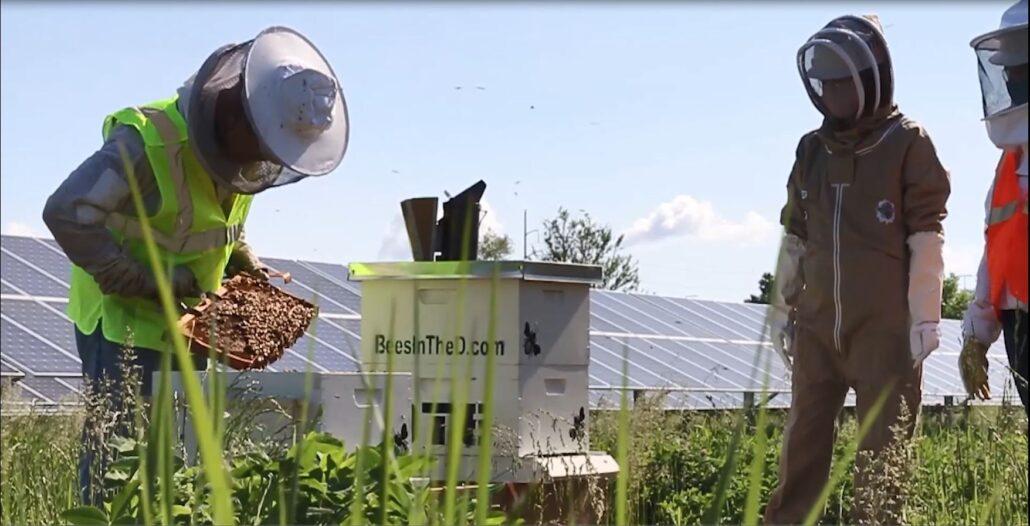When you see a bee buzzing around the flowers in your yard, or a butterfly fluttering by, do you give it a second thought? These and other pollinating species are often taken for granted, but they have a large impact on the health of Michigan’s ecosystems and economies. Pollinators are essential for a diverse and abundant food supply – one in every three bites of our food comes from plants that are pollinated! In Michigan, the success of apples, blueberries, cherries, peppers, and many more crops depends on pollinators.
Pollinators and the plants they pollinate rely on each other. Pollinators require sufficient host plants, habitat, and food sources for survival. Likewise, nearly 90% of the world’s flowering plant species need animal-mediated pollination to exist. But the decline in pollinator populations worldwide is an increasing concern, caused by habitat loss, increased insecticide and herbicide usage, competition with invasive species, extreme weather events, and light pollution.
As Michigan transitions to cleaner sources of energy, DTE has an extraordinary opportunity to lead the way in solar energy development while benefiting the environment and local communities. Pairing solar energy facilities with restored native habitat can support the pollinator species that are so critical to Michigan’s identity and character.
“At face value, including pollinator habitats in our solar facilities is the right thing to do,” said Amanda Ignatowski, senior engineer in Environmental Management and Safety (EM&S). “Every renewable energy project has a vegetation management plan – we will look at those plans for our future solar projects and determine how we can incorporate pollinators.”
Installing pollinator habitats at solar facilities has a wide range of benefits. Ecological benefits include maintaining and improving soil fertility; reducing soil erosion and surface runoff; providing food and shelter for wildlife; and sequestering more carbon than turf grass. Pollinator habitats are also economically beneficial, decreasing operations and maintenance costs over time and saving money on fertilizer and soil amendments.
“The benefits really outweigh the challenges,” said Amanda. “From a logistics standpoint, maintenance starts to die down around year four of solar park operation. It becomes something that’s a lot more manageable for our teams, and we also start to see a return on investment at this point. These pollinator habitats are also better for the soil, adjacent agriculture, and overall health of the ecosystem on site.”
Incorporating pollinator habitats in solar projects also benefits local communities. In addition to increasing pollinator services for nearby crops, DTE hopes to collaborate with local growers, researchers, and community members. At our O’Shea Solar Park in Detroit, we’re already working with Bees in the D – a non-profit whose mission is to contribute to the health of honeybee colonies and native pollinators as well as the education of their importance to our environment – to provide a home for approximately 120,000 bees.
“As DTE is developing these solar projects, we’re looking forward to a future that may involve partnerships with the community, including local beekeepers,” said Amanda. “These efforts aren’t meant to just benefit the few but be a source of overall improvement within the communities where we live and serve.”

